
Digital Strategy Awards 2023
Check the winners below!
Best Creative Campaign – Organizations
Asian Americans and Pacific Islanders for Civic Empowerment Education Fund (AAPI FORCE-EF)
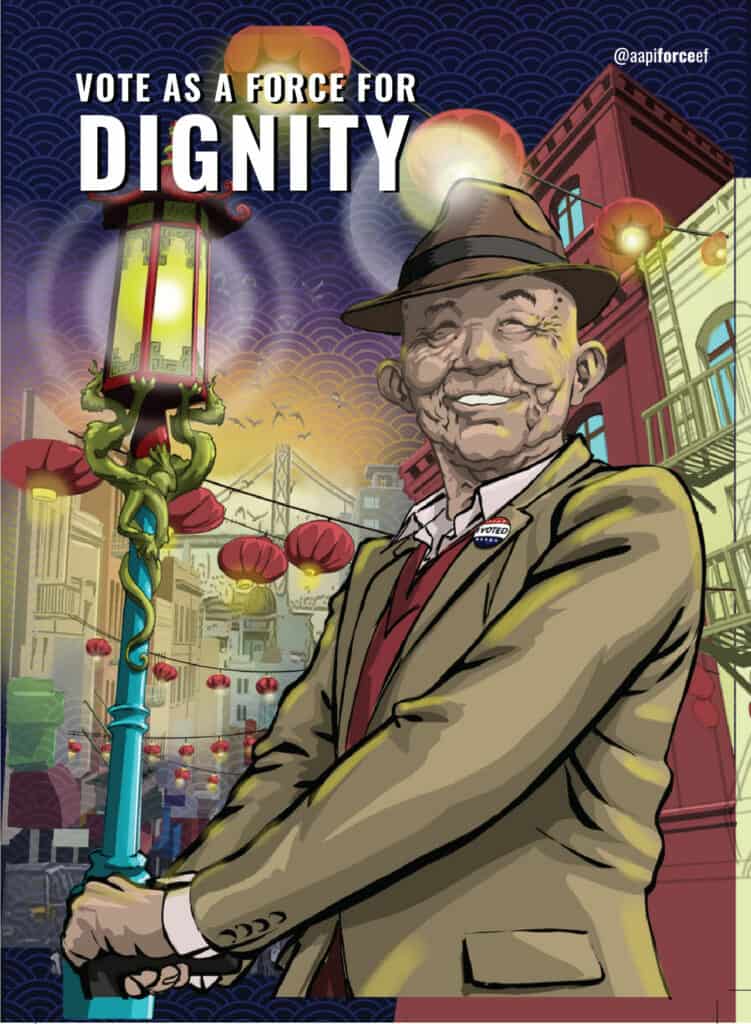
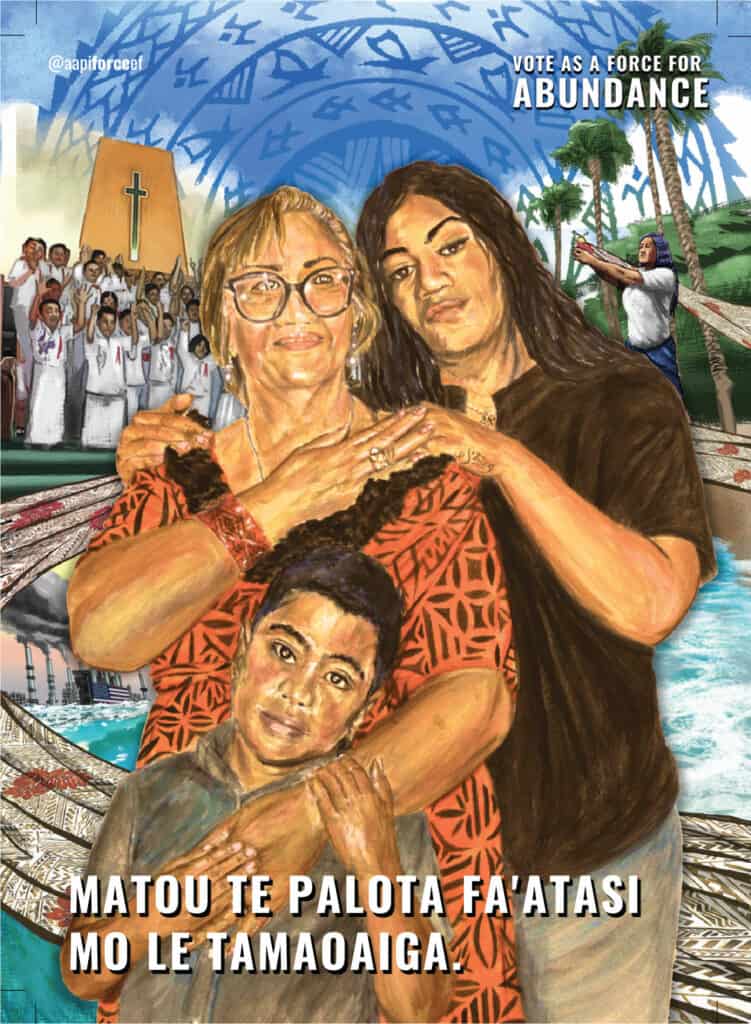
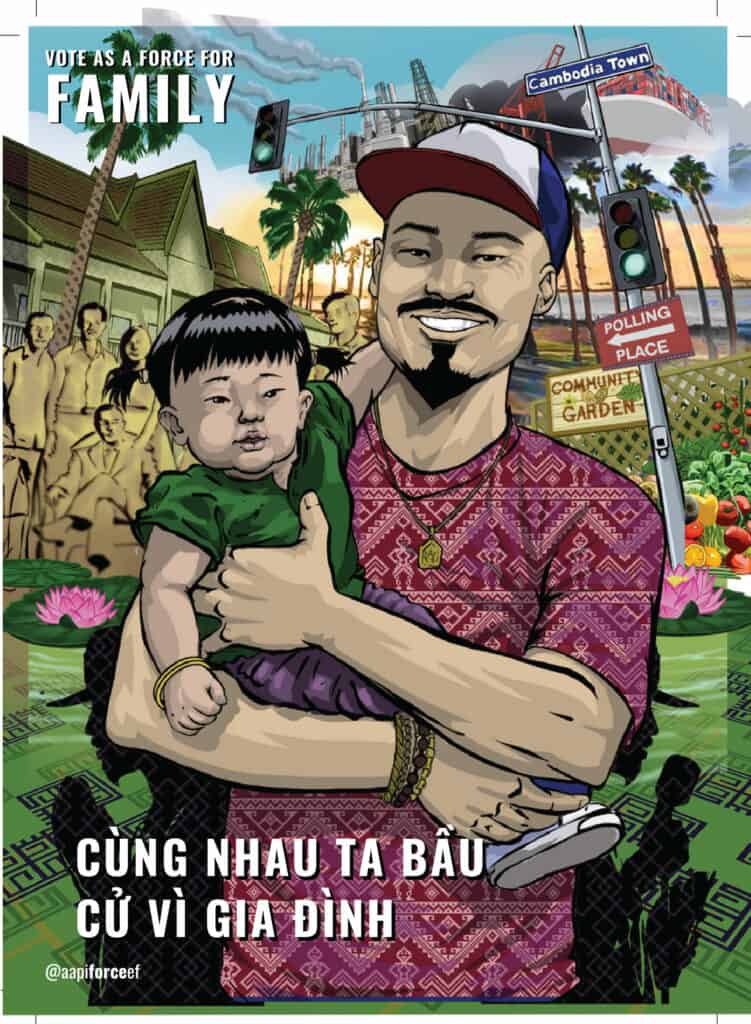


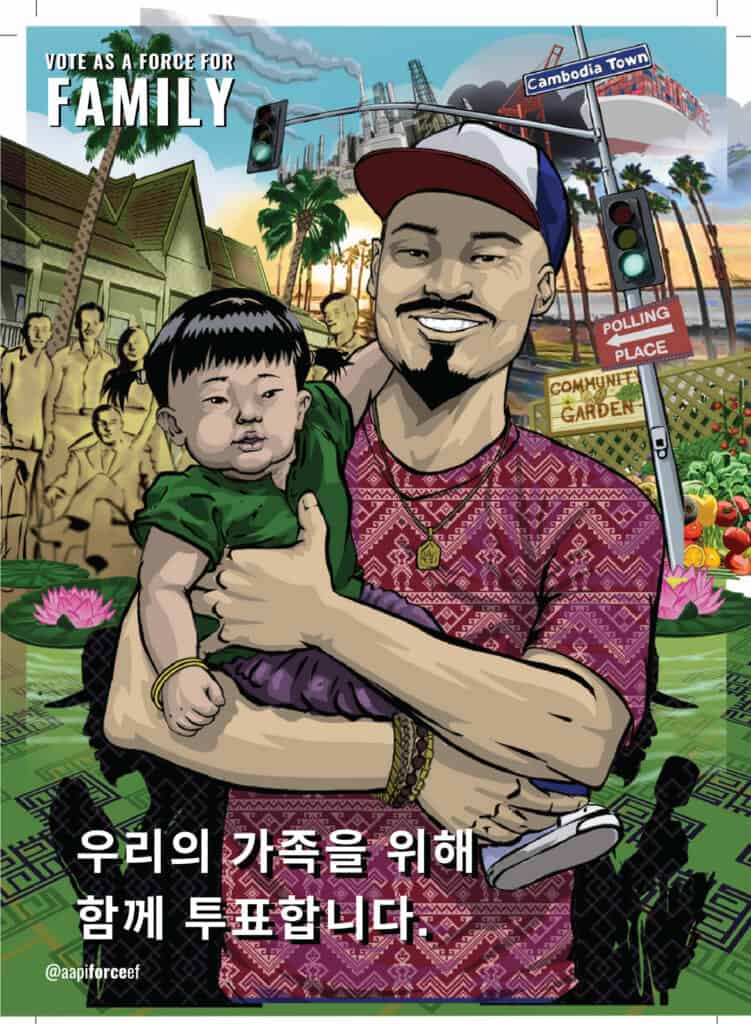
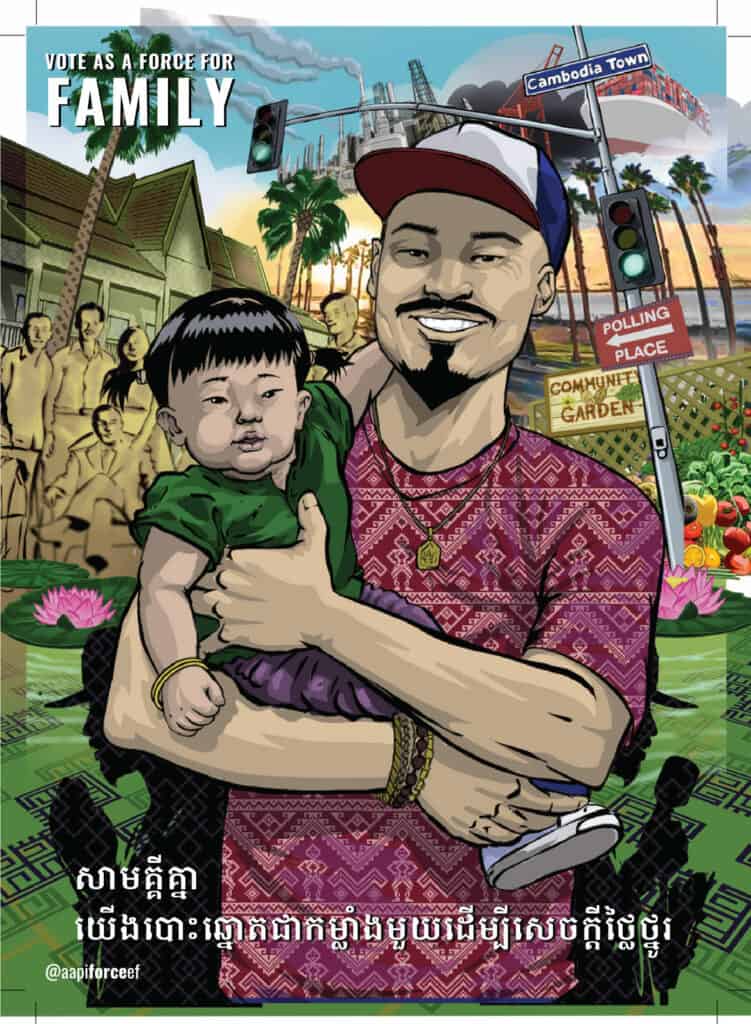

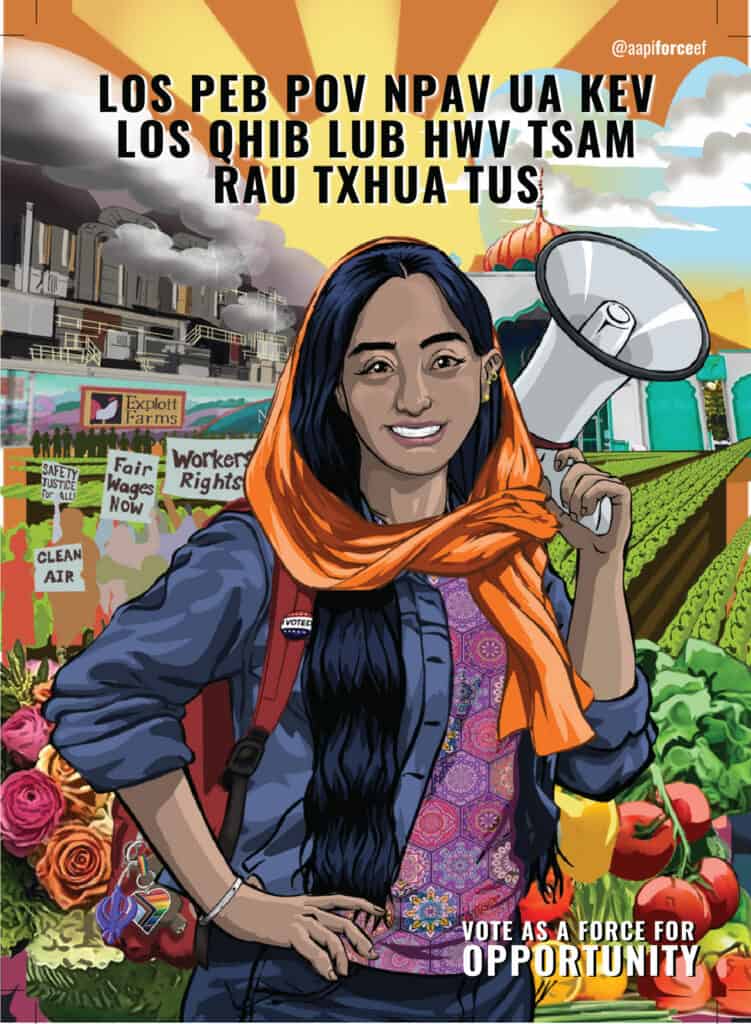
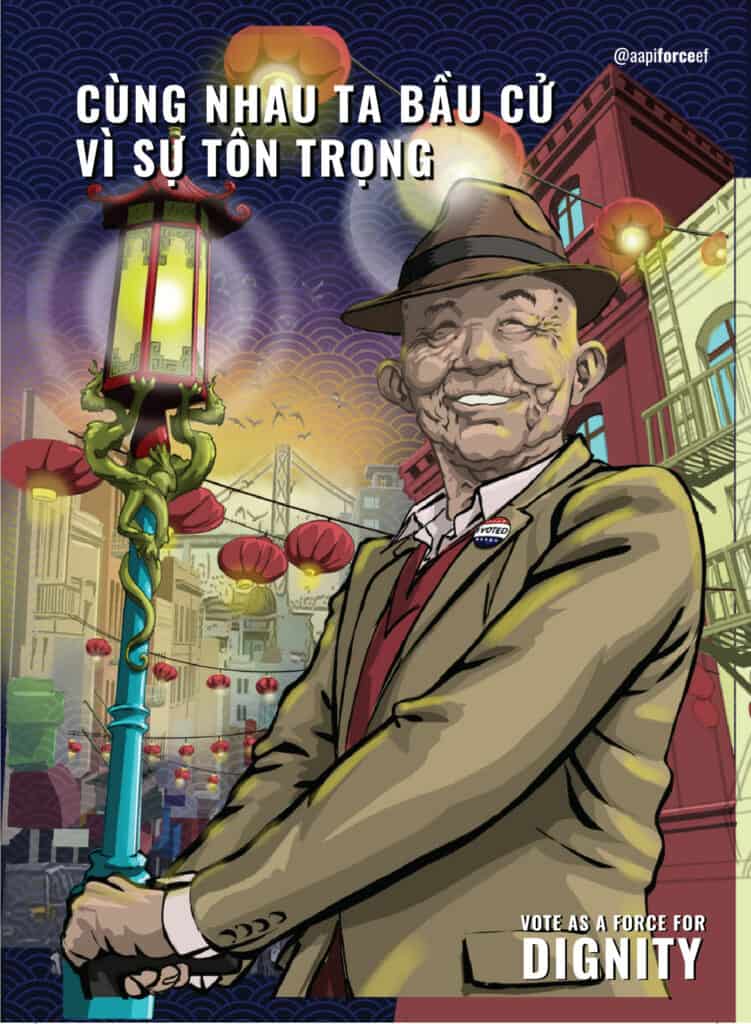

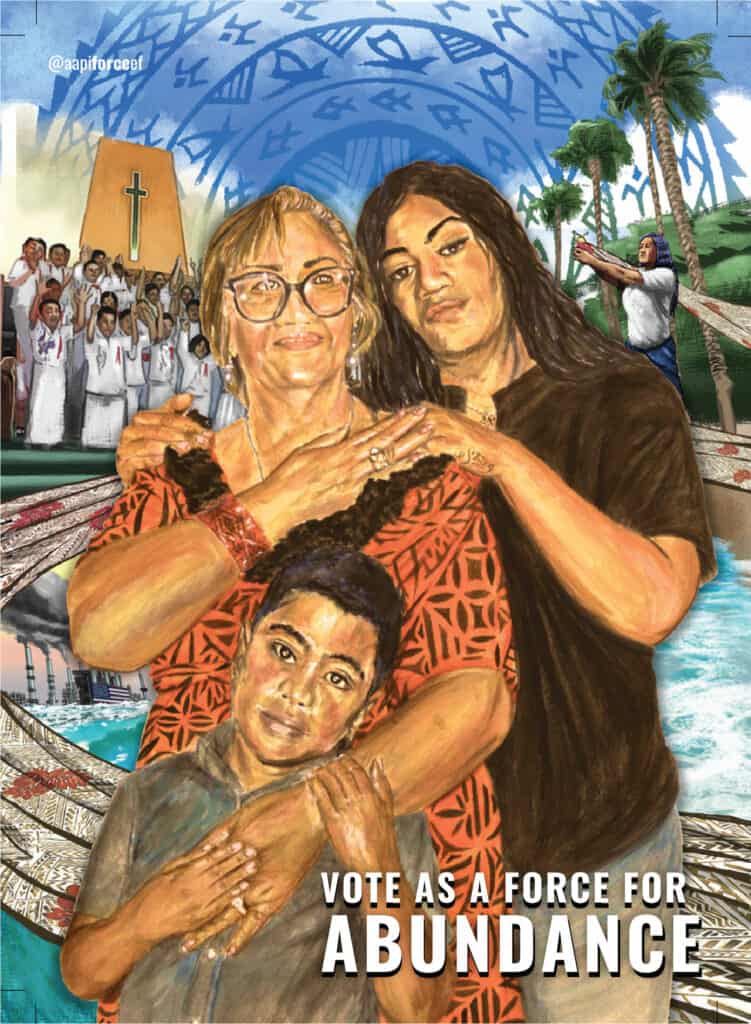
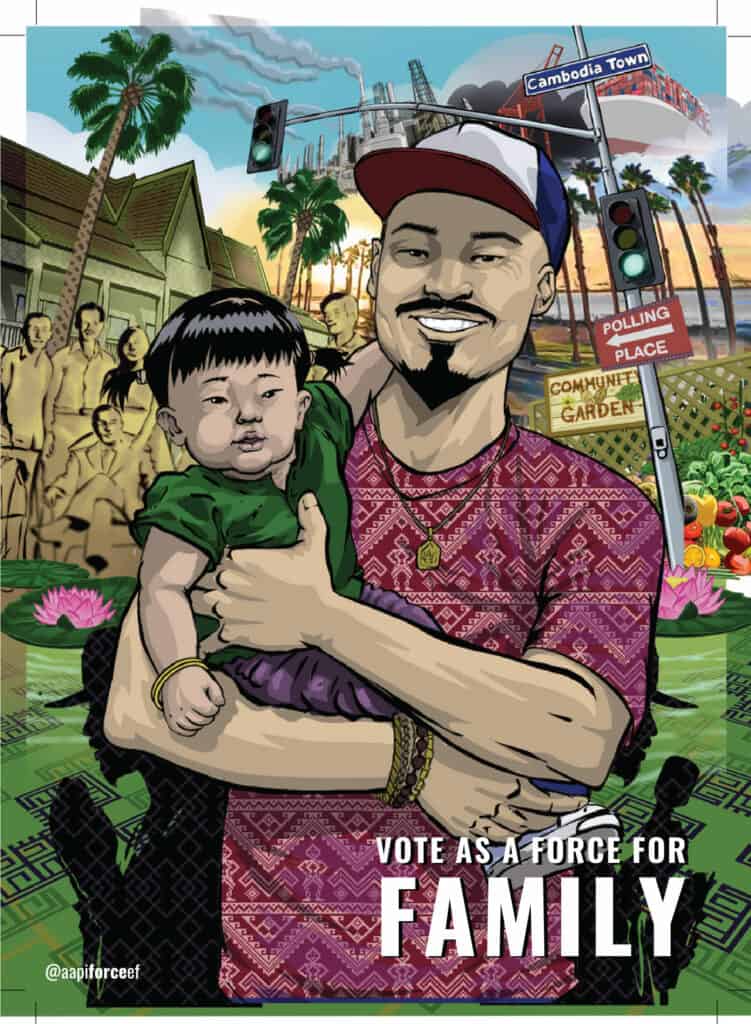

Project Background
AAPI FORCE-EF implemented a large-scale Get Out The Vote awareness campaign for the 2022 Midterm Elections. The campaign was designed to use values-based messaging to target Asian American and Pacific Islander (AAPI) voters through printed mailers and a wide-reaching digital ad strategy. Our values were created through careful consideration of our network’s audiences and our collective vision for the future. By implementing an awareness campaign, our goal was to reach as many AAPIs in the state as possible to share in-language information about the midterm elections and to empower our communities to Get Out The Vote.
Through narrative research in collaboration with our statewide network of grassroots community-based organizations, we identified two key issues for AAPIs in this election: anti-Asian hate and the need for more in-language voter information for AAPI communities in California. In order to create a campaign that resonates with diverse groups of AAPIs across the state, we drew from the stories of our network and their members and translated our materials into 9 different AAPI languages including Chinese, Hmong, Lao, Korean, Khmer, Punjabi, Samoan, Tagalog, and Vietnamese. By highlighting the diversity of our communities, we imagine a better future for California together. We worked with a talented team of artists and consultants to produce original artwork, animations, in-language voiceovers, and a social media ad strategy for this campaign. Our campaign reached 29k households via postcard mailers, had over 3.4 million video thruplays on Youtube, Google, and OTT streaming, and gained over 11.8 million impressions online. See our videos on Youtube: https://www.youtube.com/@aapiforceef.
Best Creative Campaign – Political Campaigns
Mike Collier for Lt. Governor of Texas — Authentic

Mike Collier ran for Lt. Governor of Texas to bring Texans together. A crucial part of his platform was prioritizing the state’s infrastructure needs. Mike entered the race with decades worth of experience in the energy industry and professional background as a CPA, supporting companies with investments in renewable energy. His background was all the more reason that, when the Texas electricity grid suffered so much during the February 2021 winter storm, Mike was particularly passionate about ensuring folks knew his perspective and platform regarding the energy grid. “Fix the damn grid” became the campaign’s unofficial slogan. It was a powerful way to bring attention to one of the candidate’s top priorities: solving the energy crisis in Texas and working to ensure Texas’ power grid would keep running. We utilized this messaging prolifically throughout our emails, ads, and even merchandise. For instance, Mike Collier’s team asked us to create rapid-response merchandise that incorporated his commitment to “fixing the damn grid.” Our team created a design that included the phrase “Fix the Damn Grid” with unique text and put it on a t-shirt (with letters that glowed in the dark). This t-shirt, which started in a moment of rapid response, was a best-seller on Collier’s online store and raised more than $15,000 throughout the cycle. The winter storm in Texas was devastating, so finding ways for people to feel connected to a greater cause – in the form of merchandise – in the midst of it is unique. “Fix the damn grid” was compelling, memorable, and highlighted the candidate’s lighthearted and unique tone of voice while simultaneously addressing the issue in a concise and no-nonsense way. It allowed us to draw a sharp contrast between Mike Collier’s history as an energy expert with the knowledge to repair and modernize Texas’ power grid and his opponent’s complicity in previous grid failure in a way that balanced the line between humorous and severe. It effectively highlighted the issue at hand rather than Mike Collier himself, making it abundantly clear in our digital content that the priority of the campaign and the candidate would always be the issues that affect the people of Texas most. “Fix the damn grid” is just one example of our bold content strategy. We found that the program’s success relied on our willingness to be quick, humorous, and sometimes irreverent but always honest and compassionate. Ultimately, our digital program helped to raise over $2.7 million online – more than any Democrat that has run for Texas Lt. Governor in decades – and played a substantial role in funding the campaign’s paid communications budget. We helped overcome a significant gap in resources, amplified Mike’s strong voice and position on “fixing the damn grid,” generated excitement for the campaign, and in the end, outperformed the top of the Democratic statewide ticket in Texas. Although Mike Collier did not win the general election, we demonstrated just how critical a role running authentic, issues-driven digital programs can play in powering a statewide Democratic race in Texas.
Best Digital Ads Campaign – Organizations
Climate Power, League of Conservation Voters, Black Progressive Action Coalition, Somos Votantes, and the NRDC Action Fund
The Inflation Reduction Act (IRA) is the most significant domestic climate, clean energy, and environmental justice policy in history. The law sets the stage for a remarkable transformation of our economy. Since its passage, companies have already announced nearly 90 new clean energy projects in 29 states, totaling $91 billion in local economic investments and creating more than 98,000 jobs. The IRA remains incredibly popular. Three months post-passage, polling shows 64% of Americans support the law, including 32% of Republicans. This isn’t by accident. Shortly after passage of the bill, Climate Power partnered with LCV, Black Progressive Action Coalition, Somos Votantes, and the NRDC Action Fund on an ambitious 12-week campaign to educate over five million young and BIPOC audiences in key states about the law. Our polling found these two audiences could be significantly re-engaged when made aware of the IRA’s climate provisions, and we immediately took to the internet to do just that. We took a digital-first approach to meet our audiences where they spend most of their time. This enabled us to maintain cost-effective persuasion levels of advertising for months and allowed us to precisely target and measure how often we reach our audiences. Our targeted placements spanned the internet: high-impact video ads on connected TV, streaming platforms, YouTube, social media and other popular sites across the web. We also expanded our program to run across Black-owned audio and news outlets. We targeted audiences in AZ, GA, Los Angeles, MI, NV, PA, WI, NM and NH. No other groups have done more to highlight the historic achievements of the IRA with the American people at this point. Our $10 million campaign had 163,421,970 total impressions, including 68,970,536 impressions with minority-owned partners. Our audience saw our ads at an average weekly frequency of 19.4x. We aimed to make this one of the most thoroughly tested programs ever with both pre-flight and in-flight testing of our ads with our audience. Our goal was to not only measure impact but learn for the future. We were able to accomplish both, and in-flight testing showed that our ads convinced people that the climate plan matters for their future by 6 points! We also convinced our audience that the IRA will make a difference in their lives and we boosted Biden’s approval in the process. Some of our best testing ads from this campaign are linked below: https://www.youtube.com/watch?v=nY0eUgB43NI https://www.youtube.com/watch?v=WcUGIRNhZTo https://youtu.be/5ItacgHEQLI
Best Digital Ads Campaign – Political Campaigns
Lorena Austin for State House — Run the World Digital
In Arizona’s 2022 midterm elections, control over the legislature was hotly contested, while a polarizing gubernatorial election threatened to distract voters from down-ballot races. Our digital program for Lorena Austin for State House focused on introducing voters to Lorena’s compelling personal story and emphasizing her deep ties to the community in Arizona’s 9th District. Throughout the campaign, we told voters Lorena’s story – from ads focusing on her family’s deep history of serving the community, to an ad focusing on the election’s stakes for abortion rights, to explaining her positions on water rights, education, and the economy. In total, our ads served over four million impressions and reached over 115,000 key voters, helping to deliver Lorena a victory within a 2% margin.
Best Digital Fundraising Campaign
Kris Mayes AZ — Run the World Digital
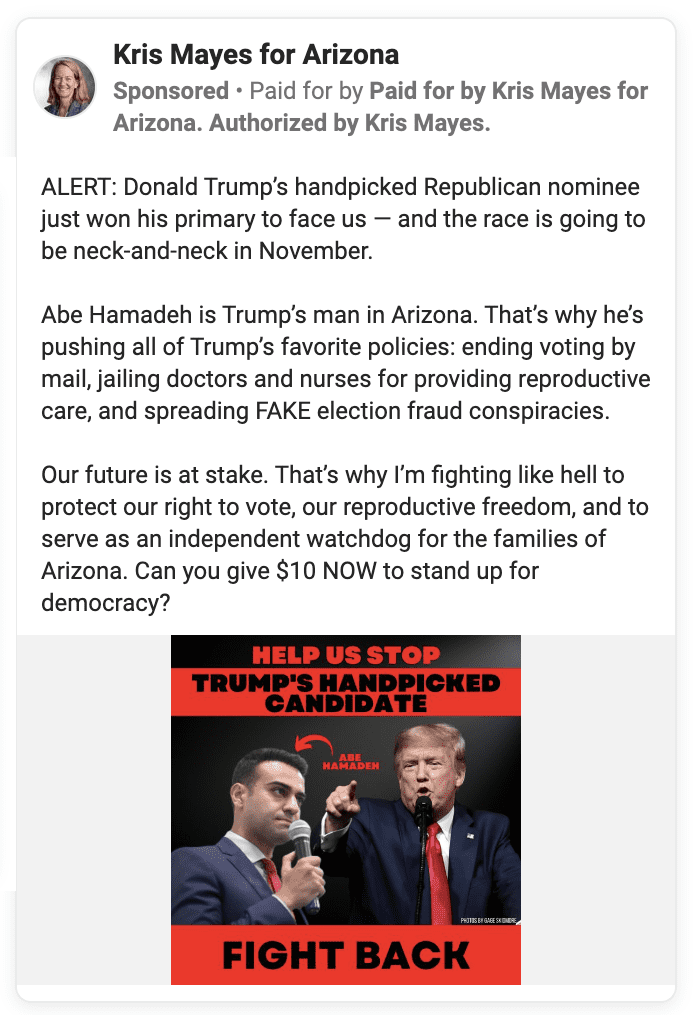

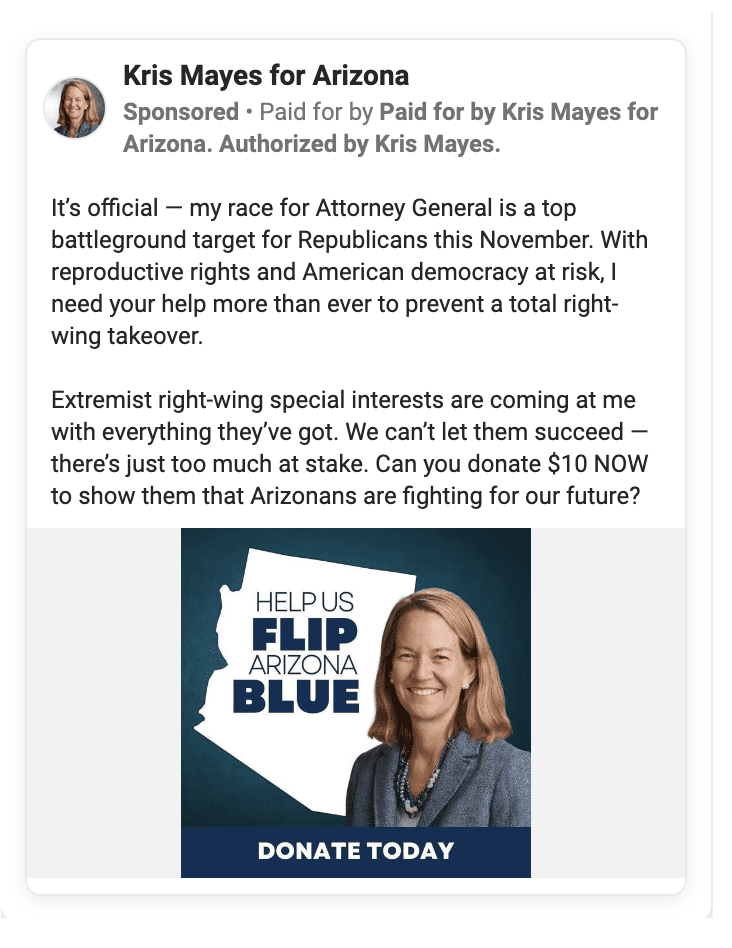
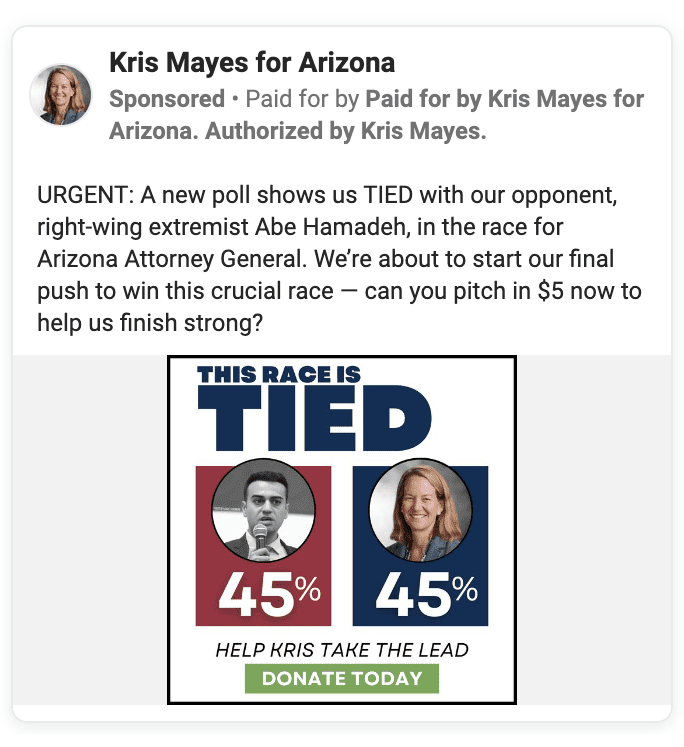
Arizona became a major battleground state after the 2020 elections where Mark Kelly and Joe Biden won their respective races. Two years later, and millions wasted on wild goose chases trying to overturn Biden’s Arizona win, a slate of “Arizona First” candidates headlined the AZ GOP ticket – lead by Kari Lake and Blake Masters. On the Democratic side, Mark Kelly, Katie Hobbs and Adrian Fontes all had name ID as current or recently elected officials. But Kris Mayes hadn’t been in office in more than 10 years, and last time she was, it was as a Republican. Being the fourth of four notable statewide races, Mayes initially did not have the fundraising prowess or recent name ID her other four statewide colleagues had. When outside groups pulled their reserved ad time, Republicans celebrated what they thought was a certain win. Faced with a deficit in name ID, and Kelly and Hobbs fundraising machines, struggled to fundraise initially. But a campaign overhaul in June led to a new fundraising team. That team raised more than $600,000 in 5 months, including more than $100,000 through texts, via digital fundraising, and overall the campaign hit $3 million raised total. The entire campaign Mayes polled in a dead heat with her opponent, but outside groups were forced to triage races elsewhere. By raising that amount of money, we allowed Mayes to go on TV first, stay on TV, and expand other paid advertising when other groups pulled out. On Nov. 11, Mayes had a slim 500 vote lead, triggering an automatic recount. On Dec. 27, Mayes was declared the next Attorney General of Arizona by roughly 200 votes. Her win gave Democrats in Arizona their first statewide trifecta (Governor, Secretary of State and Attorney General) since the 1970s.
Best Digital Organizing Campaign
Fund Excluded Workers Campaign – Make the Road NY
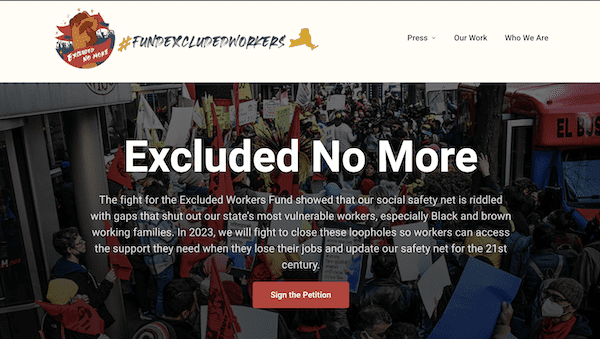
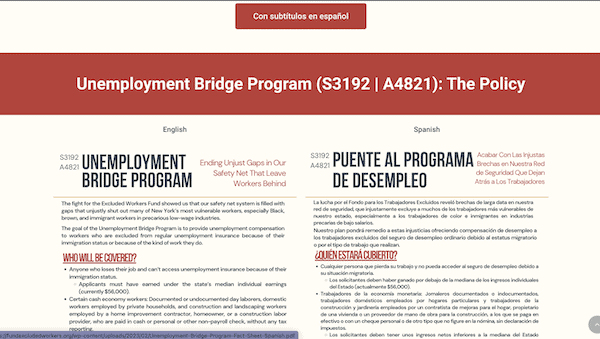

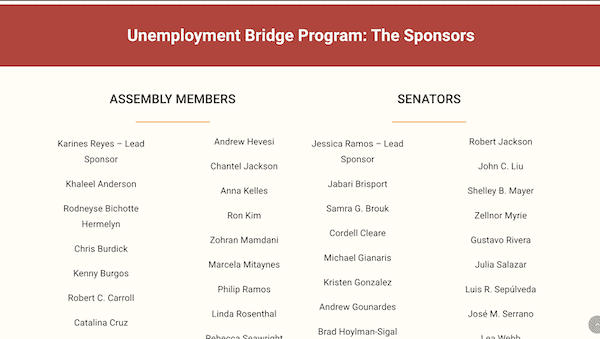
Through powerful online and offline organizing, the Fund Excluded Workers Coalition campaign helped create the first-in-the-nation $2.1 billion fund that reached more than 131,000 workers excluded from unemployment and Pandemic Unemployment Assistance in 2021. This 2023, the campaign is fighting to ensure permanent inclusion in the unemployment system for all, by establishing a permanent unemployment insurance program that can be accessed by excluded workers who currently contribute to social safety net programs, but are excluded from unemployment insurance. The campaign is actively uplifting the stories of excluded workers in the press and on social media, and the campaign’s website, changing the narrative to ensure excluded workers are seen as an essential part of our economy, and therefore deserving of the same rights like Unemployment Insurance, as any other New York State worker. Social media handles: https://twitter.com/FEWCoalition https://www.instagram.com/fewcoalition/ https://www.facebook.com/FEWCoalition Website: https://fundexcludedworkers.org/
Best Email Campaign – Organizations
United We Dream DACA — Authentic
After the Fifth Circuit Court of Appeals upheld a lower court’s ruling that shut down the DACA program to new applicants, United We Dream (UWD) wasted no time jumping into action to support DACA recipients. The outcome of the case meant that the future of DACA was now back in the hands of a lower court, which could rule to end the program for good — potentially shutting the program down to current recipients too. UWD leveraged their email program to fundraise for their DACA Renewal Fund — a specialized c3 where all donations go toward covering the $495 cost of renewal fees for DACA youth. This campaign was solely focused on supporting DACA recipients impacted by the court’s anti-DACA decision. UWD reached inboxes within hours, alerting allies to the decision and directing them to support DACA recipients by making a donation to UWD’s DACA Renewal Fund. The email led with the fundraising ask, but then expanded upon the decision and what it meant for impacted people. There are many DACA recipients and immigrant youth on UWD’s email list, so it’s important we use these moments to educate in addition to driving engagement. We navigated a tightrope with our campaign, with two key objectives. First, to educate and inform our email audience (many of whom self-identify as immigrants) about what this decision meant for their legal status. Second, we had an opportunity to capitalize on this moment and raise maximum funds to UWD’s DACA Renewal Fund, so they could support as many DACA renewals as possible in case a future court decision shut down the program to current DACA recipients, as well. We planned ahead for various scenarios, so that when the decision was announced that Wednesday afternoon in October, it only took some minor additions based on the text of the decision before our email landed in inboxes. Our email alert included a graphic that explained what happens to DACA recipients and DACA eligible youth. It also gave allies and supporters an opportunity to step up for DACA recipients in this dark moment, by directing them to make a donation to the DACA Renewal Fund. We even used a button amount for a $495 donation — the cost of DACA Renewal fees, and larger than we’d normally ever make an ask for — which helped drive up the average donation amount and raise more than $10,000 toward the fund in a matter of hours. This one campaign was part of a year-long effort to reach United We Dream’s goal of supporting more than 500 DACA recipients through their DACA Renewal Fund — a goal we exceeded thanks to our fundraising campaigns.
Best Email Campaign – Political Campaigns
Friends of Francesca Hong
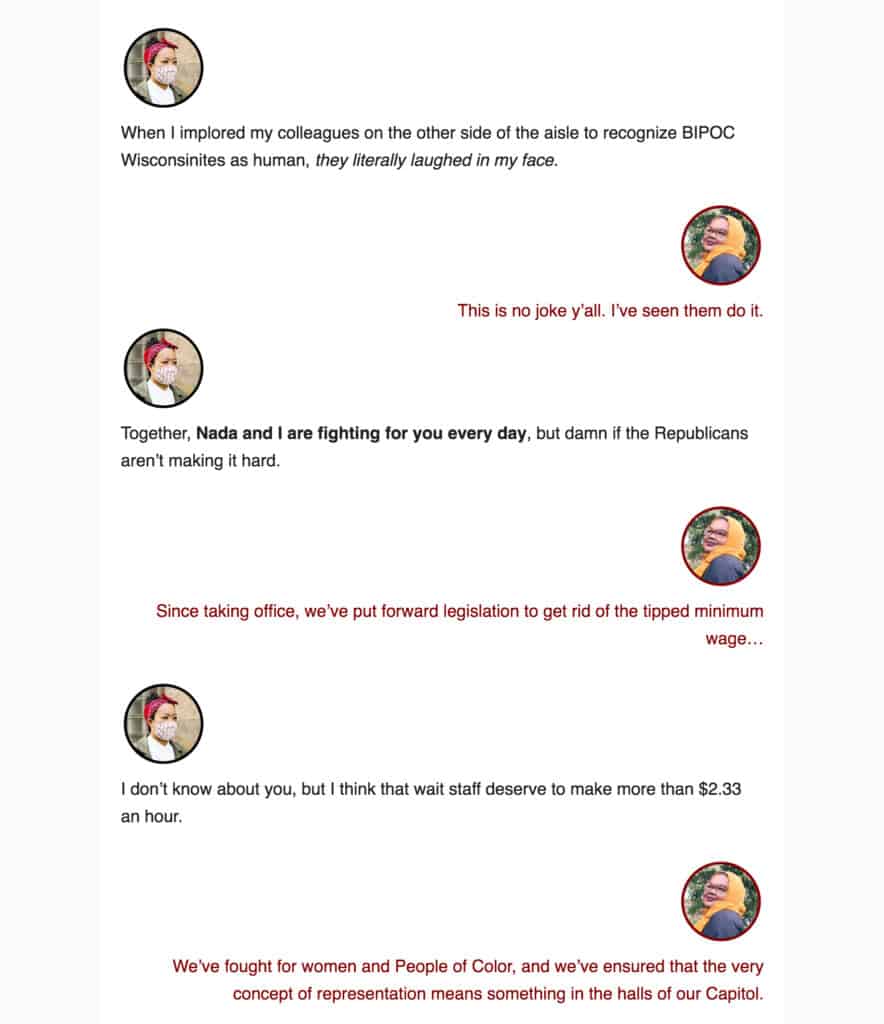
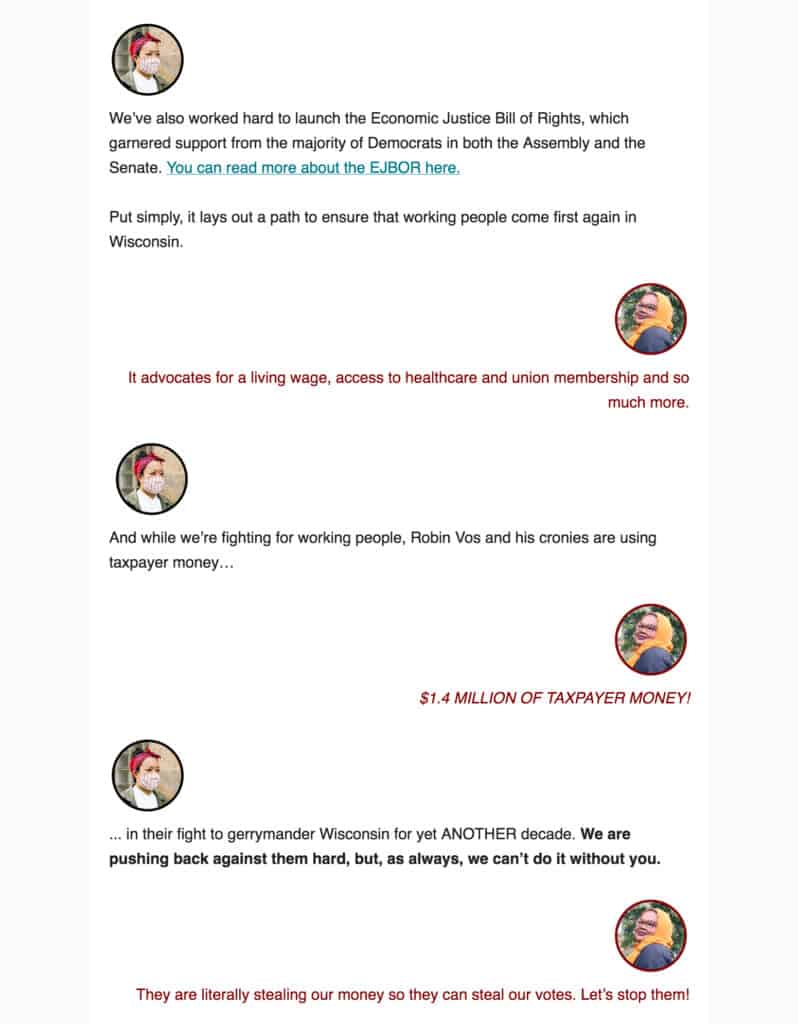

The Aaron Ford for Attorney General campaign worked to develop, launch, and sell Nevada’s first-ever NFTs. The objective of the initiative was to give donors a chance to literally own a piece of the campaign — in exchange for a donation to Aaron Ford, they received a one-of-a-kind, limited edition NFT. The NFTs functioned as a digital membership card. There were different tiers available for purchase, and each card was exclusively numbered and came with a unique link only the owner could share with their friends and family to show the critical role they played in the campaign. The purpose of creating these NFTs and marketing them to the campaigns’ supporters through email and social media was to offer donors something in return for their support, and capitalize on the enthusiasm surrounding unique digital tokens already out there. While many campaigns sell merchandise or yard signs for voters to show their support, these NFTs were an innovative way to allow donors to show off their support in the digital age. This effort was a true innovation in political fundraising, and we saw excellent results. After the first email advertising for the Team Ford Membership cards was sent, $1,350 in NFTs were sold, demonstrating a large increase over our average raised per fundraising email that month, which was usually about $475. The average donation also increased, as our normal average was $35.50, the NFTs started at $50 and ranged up to $500 — meaning donors were willing to spend more, on average, to receive a unique digital token in return. These NFTs were a rare example of a campaign willing to experiment with new technology and offer donors a way to support the campaign that aligned with their interests aside from politics. Owners of these NFTs will still own them well past Election Day, meaning they have bought into and will feel connected to this campaign and this candidate for years to come. These NFTs were a true innovation in digital fundraising and an exciting hint at what we may see become much more common in the future.
Best Merch
Vote Neigh by Loud Light Civic Action

Kansas was the first state to vote on abortion rights after the U.S. Supreme Court’s Dobbs decision. By an 18 point lead, Kansans voted no on an amendment to the state’s constitution, backed by the GOP supermajority in the legislature, which would have removed all constitutional protection to abortion and allowed for a total ban. This victory was achieved by a wide coalition of advocates stretching across the entire state. While no single effort can be credited with achieving this victory alone, the “Vote Neigh” campaign has been described as a driving force in turning out young voters and bringing joy to the pro-choice movement.
Best New Digital Tool
GeoFusion — DSPolitical
Our clients spend enormous amounts of time and money figuring out who to target, and what to say to them– in the form of polling and modeling. But just as important is figuring out how to reach carefully cultivated targeted audiences as media consumption habits have changed massively since the pandemic. For the most effective programmatic ad targeting, advertisers need to know more than who their audience is – they must know where to find them. Too often custom lists are missing key data that lead to lower match rates. We have long taken custom lists and matched them against the full voter file to increase these match rates– but thanks to GeoFusion, we can do more. Our GeoFusion technology is geofencing like none other, capable of astounding levels of deterministic reach and quite possibly the most powerful geofencing tool available to political campaigns. Most marketers use geofencing to simply reach particular buildings where influencers are. We are the only solution that automatically draws geofences based on our client’s custom lists– enabling massive scale and minimizing waste. Reaching scale with deterministic matching is difficult – using a single onboarder and DSP can result in a reach rate well under 40%. Our GeoFusion technology uses geofencing to reach over 100 million U.S. voters deterministically– a feat unrivaled in this industry. Clients upload their custom lists to Toolbox, our custom audience management software, where GeoFusion then augments their data (often increasing match rates by double digits) and draws geofences. GeoFusion acts as a location filter that sits on-top of the DSP’s bidder. The location verification stack verifies location data from the bid request, filtering out bad location data in real-time, ensuring we are only serving ads to those who are within the geofences we have drawn and who are not one-time visitors. When it comes to using geofencing to target specific households, residences that include multiple other people outside of our target audience (such as multi-unit buildings) could put an unnecessary stress on campaign budgets. With its multiple dwelling countermeasures GeoFusion excludes buildings with three or more families by utilizing third party databases to compare against our client’s list– valuable data that clients don’t typically have access to. Randomized control trials have found that using geofencing on a large scale to target hundreds of thousands or even millions of voters has been proven to increase voter registration and persuade voters with statistically significant effects. GeoFusion guarantees our clients can deliver ads to the overwhelming majority of their targets, reaching scale, all while still targeting their ads with precision.
Best Overall Digital Strategy Impact
California’s Proposition 27 — DSPolitical & AKPD
Currently, state law in California prohibits most sports betting. California’s Proposition 27 (Prop. 27) sought to legalize online and mobile sports betting outside of tribal lands, and was marketed by its proponents as a viable source of funding for alleviating homelessness. In reality, corporations would take 90% of the profits while undermining tribal gaming control and directly undercut tribal sovereignty and self-sufficiency. DSPolitical worked with our partners at AKPD, using our state-of-the-art targeting techniques to persuade California voters to vote “No” on Prop. 27. The campaign’s persuasive video ads were supercharged by leveraging ACR data and Mid-Flight Optimization to target in the most effective way possible during every part of the campaign. DSPolitical employed cutting-edge targeting techniques to deliver the campaign’s informational and compelling video content to California voters. In the process, we pioneered a new, advanced method of digital persuasion through the use of ACR Data (Automated Content Recognition) and Mid-Flight Optimization. Video creative ran on various channels– programmatic video, programmatic CTV, and premium digital video channels like YouTube. While watching content on these video providers, an individual’s ACR data is passively recorded. This data is often used to measure advertising but can also be used for content recommendation and targeted messaging. In the case of this campaign, audience segments were built out for voters who had seen ads in support of Prop. 27. While these ads were deploying based partly on ACR data, another layer to our targeting strategy was being built out– Mid Flight Optimization. Utilizing randomized controlled trials (RCTs), we surveyed viewers of our ads and scored responses to construct custom models and enhance our voter targeting. This analysis found that viewers exposed to the advertisements were more likely to oppose Prop. 27. Specifically, the analysis found the most persuasive target to be young Latina women. Targeting was adjusted mid-flight accounting for this new information in order to optimize persuadability. This pivot in the final weeks before the election to focusing on a narrower cohort made the campaign’s media even more impactful. Despite being heavily outspent by the opposition, the impact of our work materialized on Election day when Californian voters overwhelmingly voted against the measure, with 82% voting “No.”
Best Overall Impact Digital Strategy Political Campaign
AZ State Rep. Keith Seaman — Run the World Digital
In Arizona’s narrowly divided state legislature, only one seat flipped to Democrats in the noisy, contentious 2022 elections — Rep. Keith Seaman’s victory in District 16. To win Keith’s race, we ran an intensive, micro-targeted digital campaign serving over one million impressions across Facebook, Instagram, YouTube, IP Targeting, and elsewhere. Our program focused on delivering policy-focused video content, grounded in Keith’s personal story, that educated voters on the stakes of the race and control of the legislature. In the end, our program helped deliver victory for Rep. Seaman with a razor-thin 644 vote margin, in a heavily Republican district.
Best Social Media Campaign
Giving Tuesday — Rise Collective + GaneshSpace
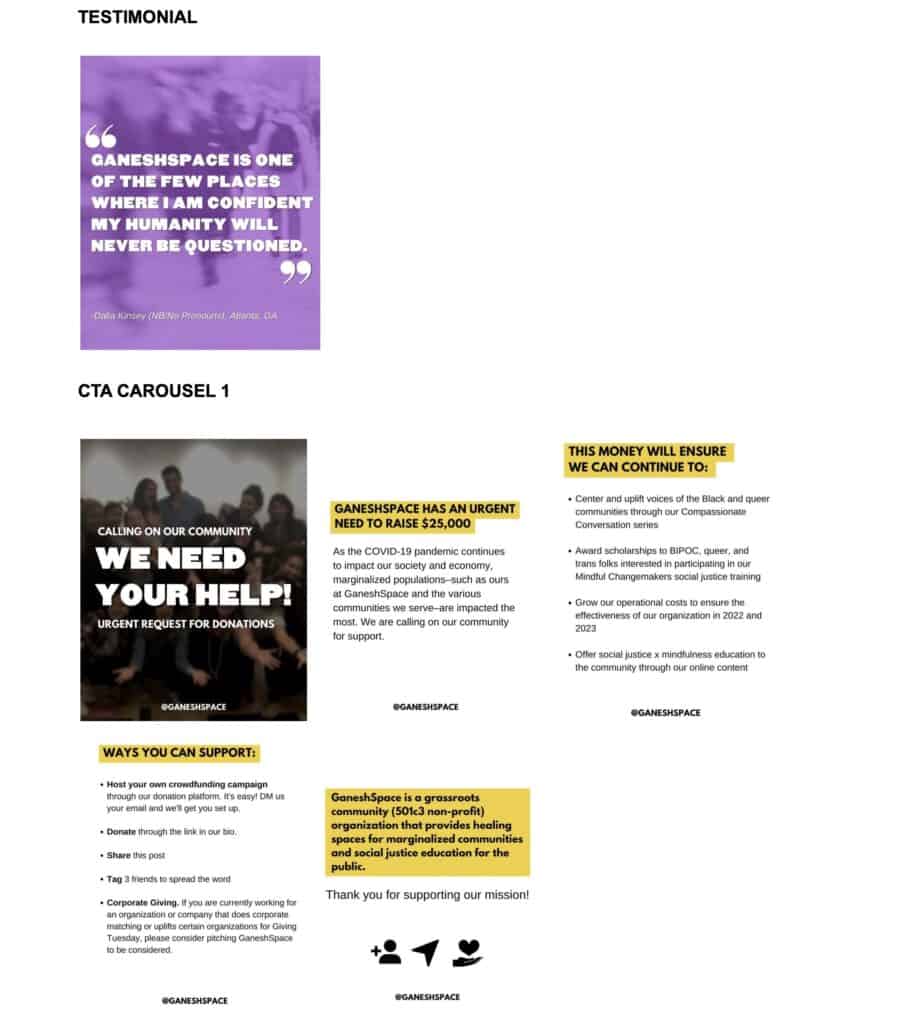
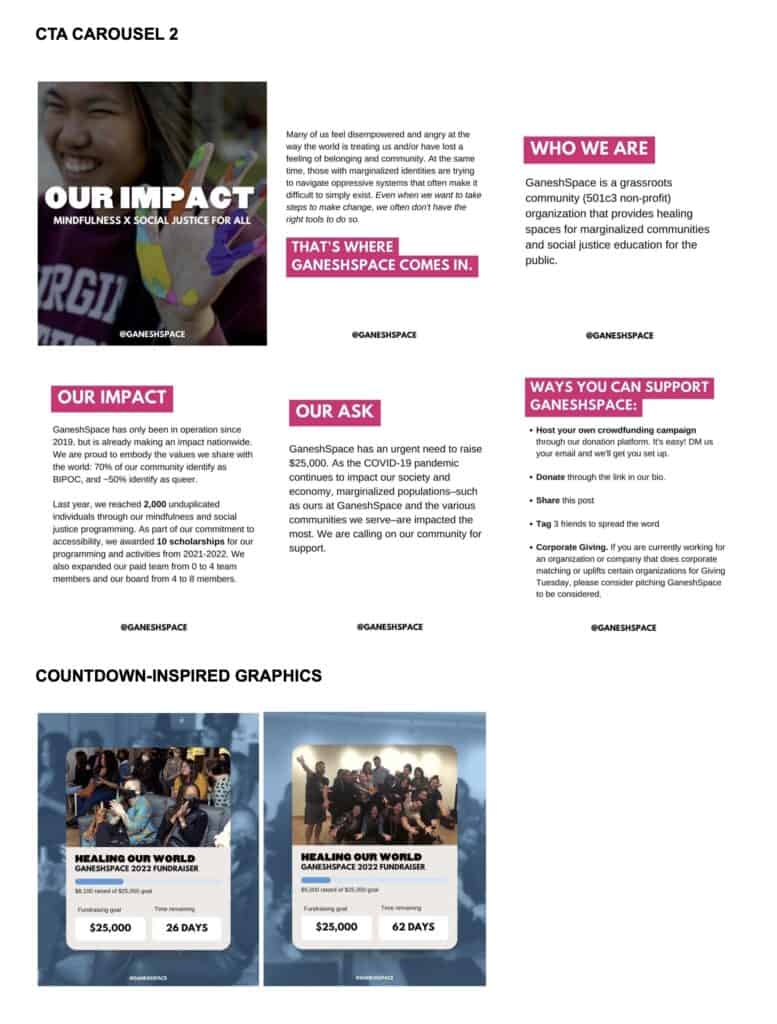
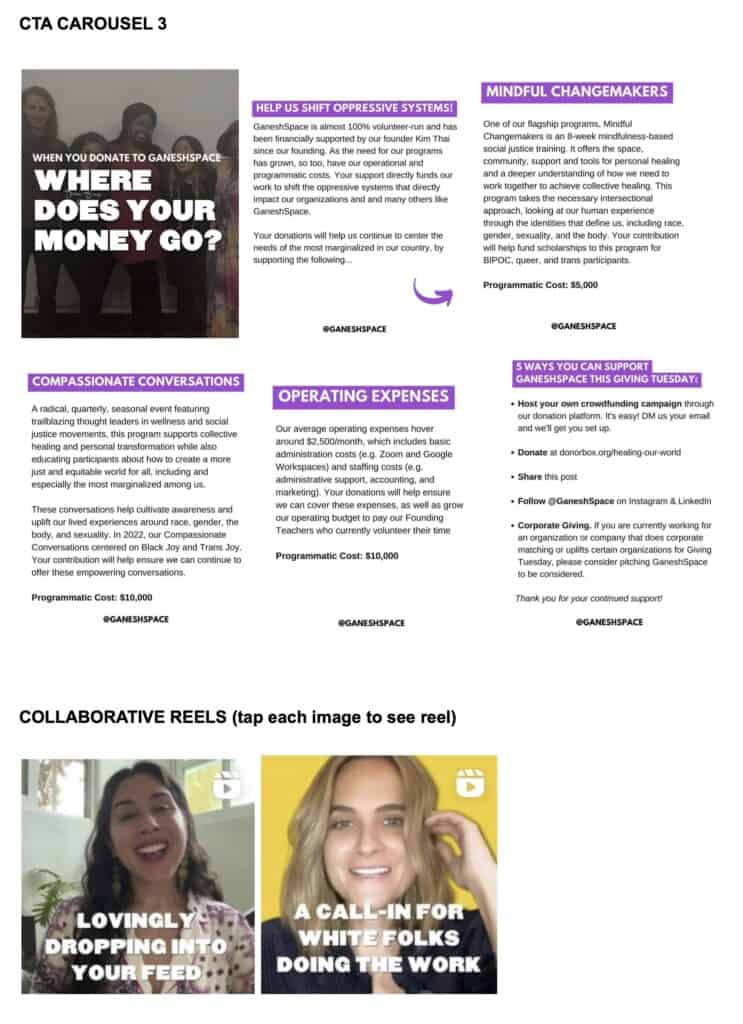
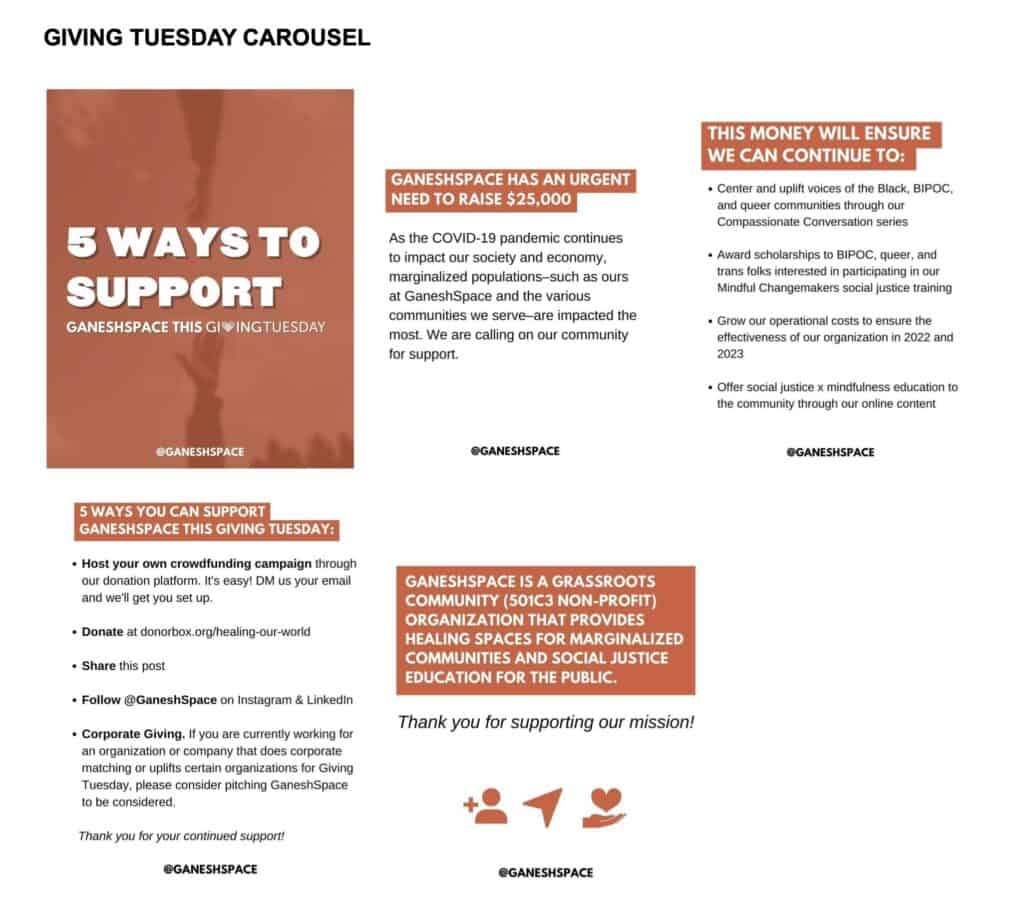
GaneshSpace is a 501c3 registered nonprofit that bridges social justice and mindfulness. Their goals: to provide healing spaces for individuals and communities with historically excluded and minoritized identities; and to educate the public about the importance of personal development to help create a world where all people–including and especially those who identify as BIPOC, queer, and trans–feel safe, resourced, and free. GaneshSpace hired Rise Collective in Summer and Fall 2022 to create a multimedia fundraising campaign for their Giving Tuesday and year-end giving season. While we also used LinkedIn and Facebook–and the organization used email marketing–our campaign primarily focused on Instagram content. That content included shareable, savable carousels; countdown-inspired graphics; testimonial graphics; and collaborative reels with team members and supporters with high follower counts. Because accessibility and inclusivity are important to both Rise Collective and GaneshSpace, we also included robust accessibility measures (e.g. closed and open captions on videos, alt text, and image and video descriptions) with each post. We worked with GaneshSpace to raise $10,000 through this campaign, largely through individual, small donations from their Instagram community. The organization’s overall fundraising goal was $25,000, but their social media specific goal was $10,000, which they reached by Dec. 31, 2022. Our campaign also increased their digital community and engagement tremendously for the months of November and December. December’s insights were as follows: – 61,339 accounts reached (+286% from the previous month) – 3173 accounts engaged (+58.8% from the previous month) – 5347 content interactions (+1175 from the previous month) – 3661 reel interactions (+366% from the previous month) – 80,754 impressions (+147% from the previous month) The content we created (included in the upload here) has continued to inspire the brand look of GaneshSpace’s Instagram, as you can see from their page: www.instagram.com/ganeshspace.
Best Social Media Video – Organizations
11th Annual TransLatinx March – Make the Road NY
On July 9th, Make the Road NY’s Trans Immigrant Project (TrIP) held its 11th Annual TransLatinx March. Nearly 400 community members took the streets of Jackson Heights to demand protections for trans sex workers and an end to employment discrimination against trans women. This video uplifts the fight for more visibility of trans joy and their voices in social media. Often, when we hear stories of trans communities, is when their lives have been taken from them at the hands of transphobia. VIDEO LINK: https://youtu.be/Vc-D0Cz8ZCE
Best Social Media Video – Political Campaigns
Community Change Action — Social Currant
@ryzehendricksmusic Our Child Care Workers deserve the world! #daywithoutchildcare ♬ original sound – Ryze Hendricks
each: 145k+ Views, 10k+ Engagements Community Change Action was looking to raise awareness about the Child Tax Credit, which is a government credit that was renewed to support caregivers around the country. We connected Community Change Action and Ryze to raise awareness about the Child Tax Credit. He created a custom rap about the Child Tax Credit to engage his audience on this opportunity for caregivers, and reached over 100k people. Link: https://www.tiktok.com/@ryzehendricksmusic/video/7095740315877018926?is_copy_url=1&is_from_webapp=v1
Best Text Messaging Campaign
Miami Foundation project Miami Connected
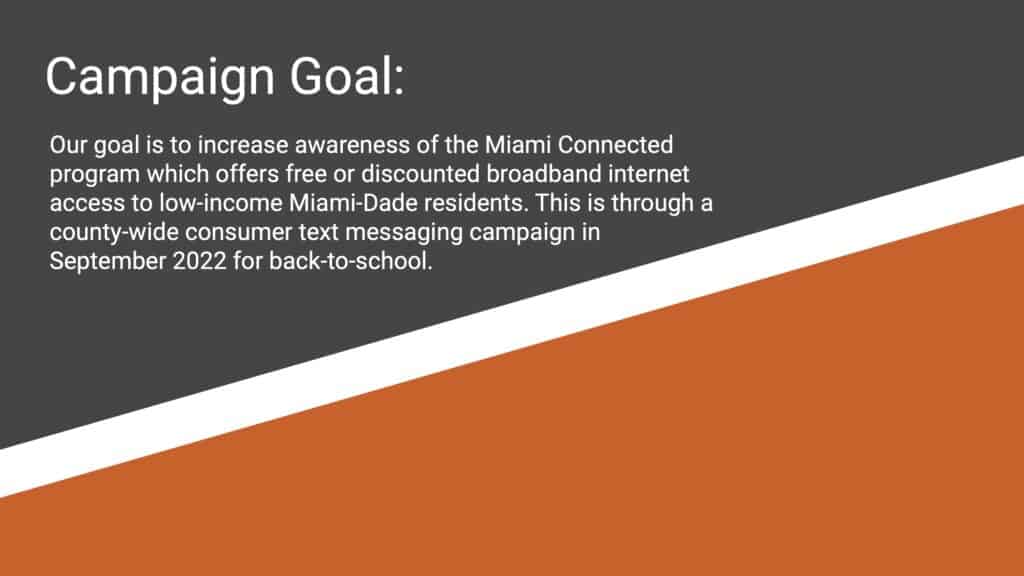



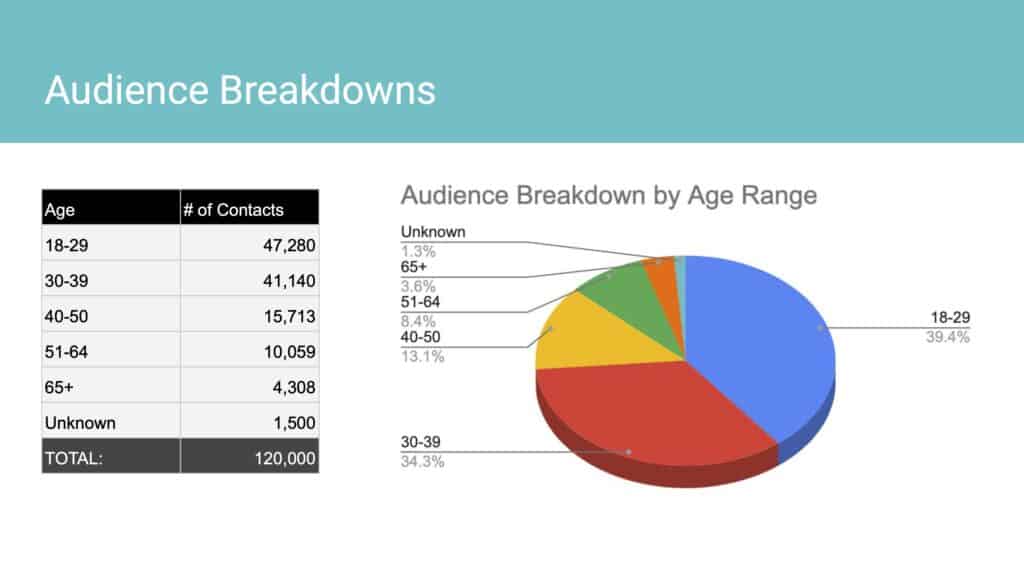




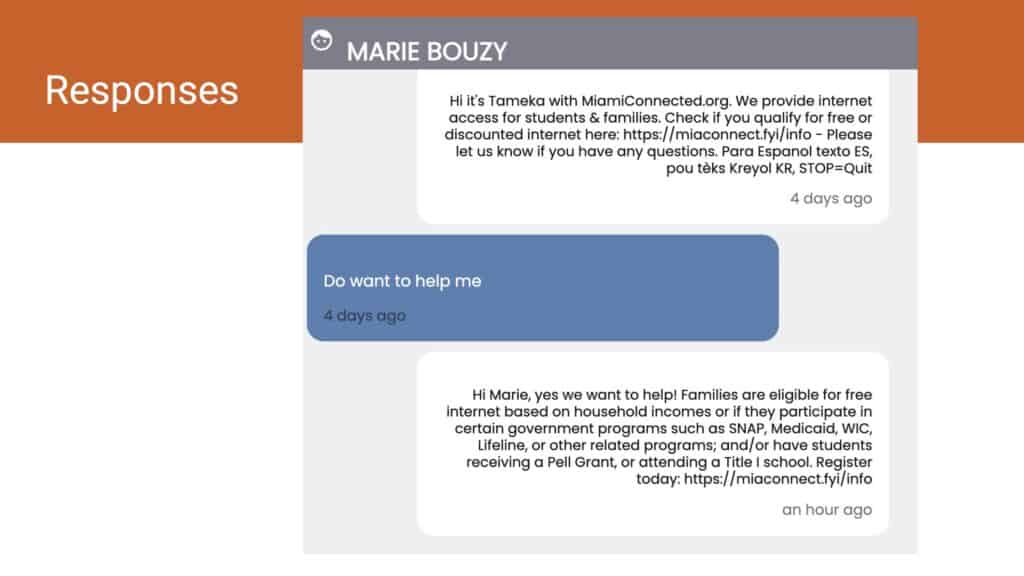
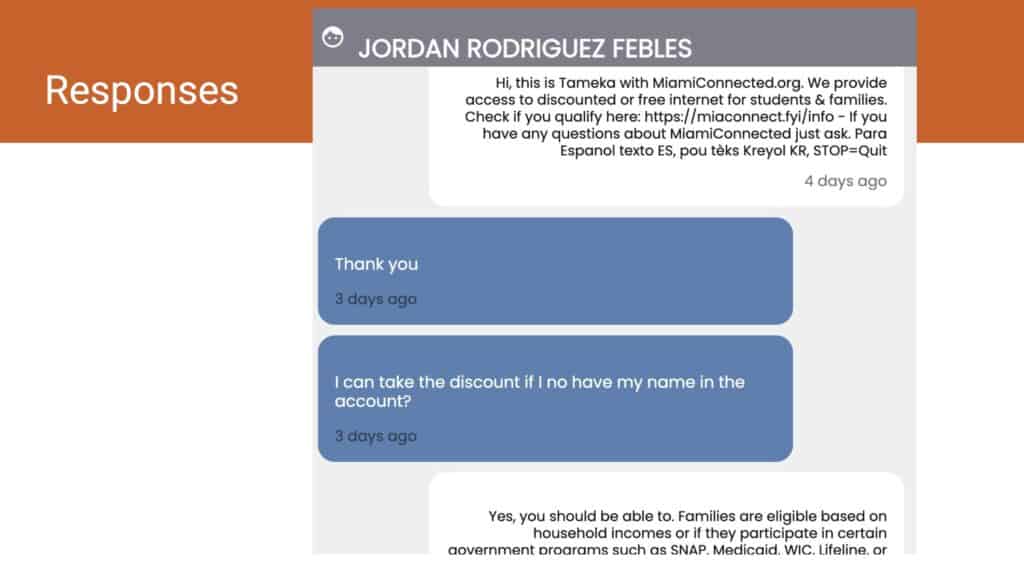
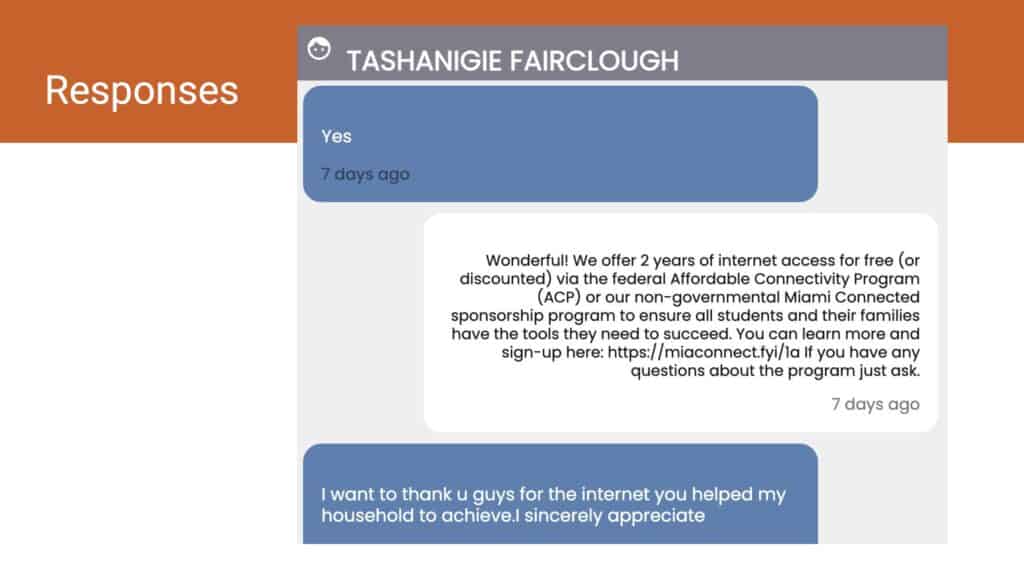
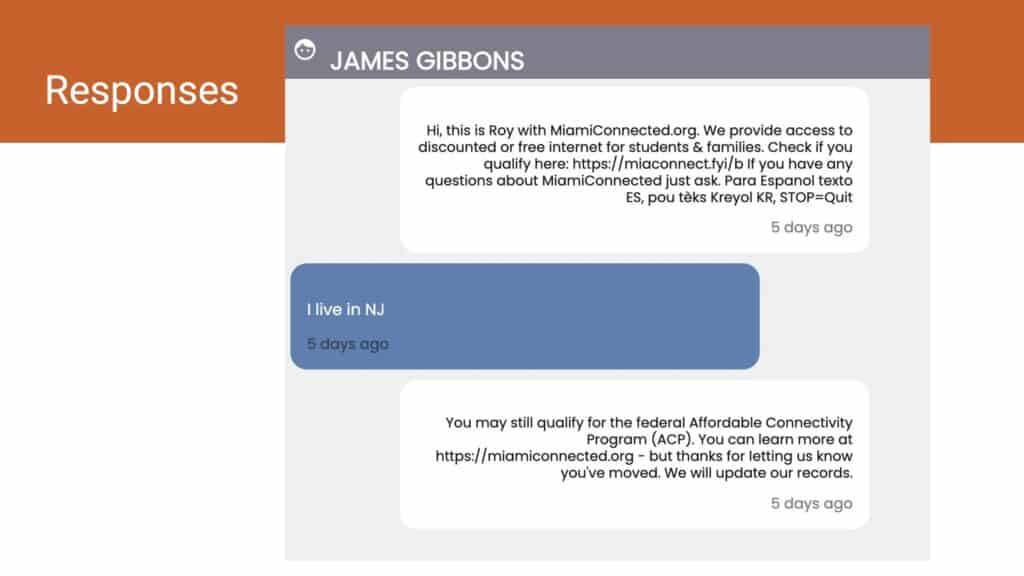

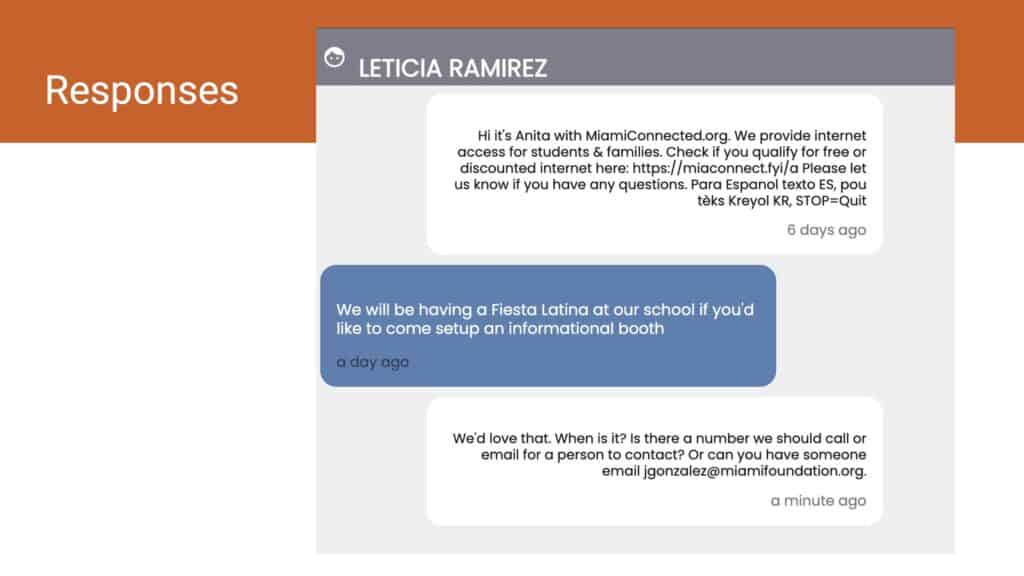

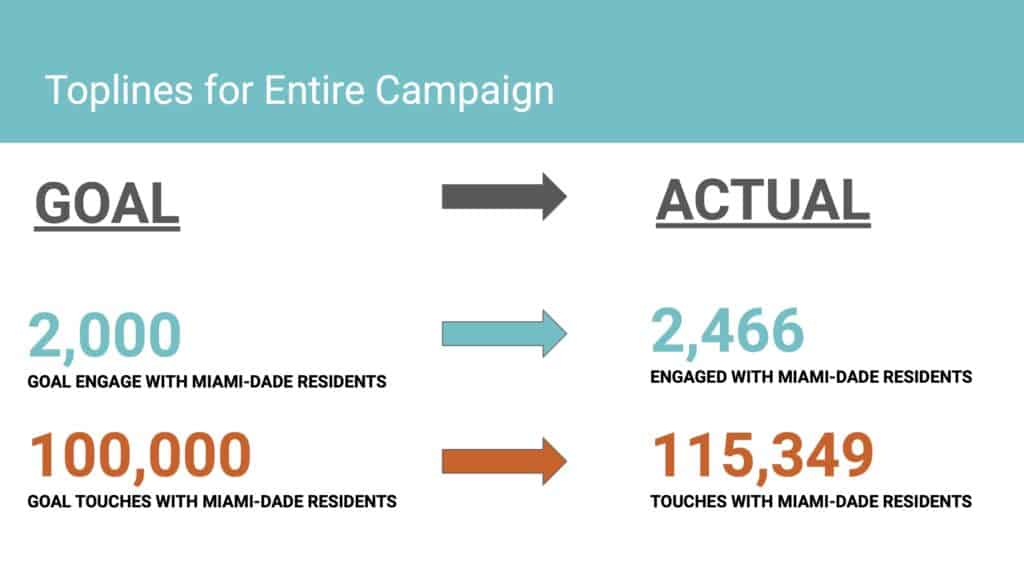


Miami Foundation and their project Miami Connected which connects low-income households to free or discounted broadband internet access. As part of their back-to-school push, we ran a P2P campaign to a targeted list of low-income Miami-Dade residents. This was the first time Miami Connected had used mobile as an outreach and acquisition tool and it truly paid off. The results speak for themselves: – 115,349 low-income residents were made aware of the Miami Connected program – We engaged with 2,466 potential program participants for a 2.34% engagement rate – Of those we engaged with we saw a 14.86% conversion rate to begin the Miami Connected application process We had better reach, engagement, and conversions than paid advertising campaigns that were run at the same time. We were able to reach audiences that would have been considered unreachable by other methods and offered responses in English, Haitian Creole and Spanish
Best Use of Influencer Strategy
Climate Power’s Inflation Reduction Act Campaign — Climate Power
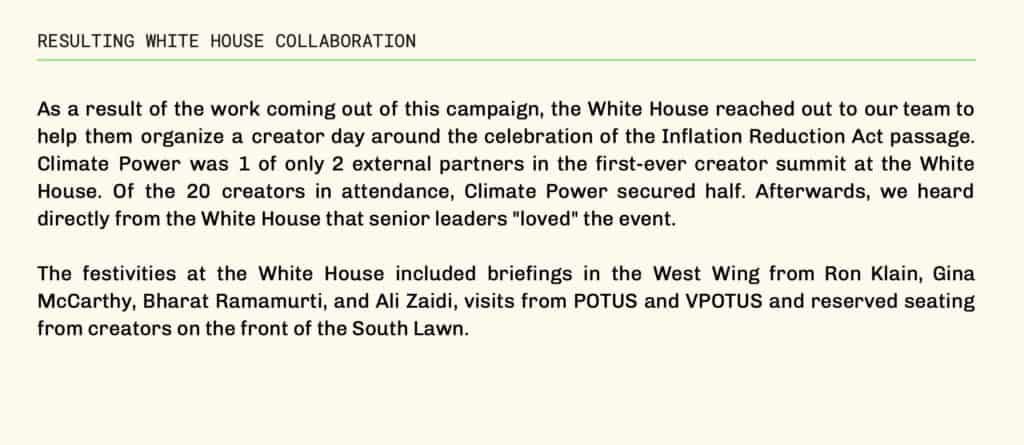
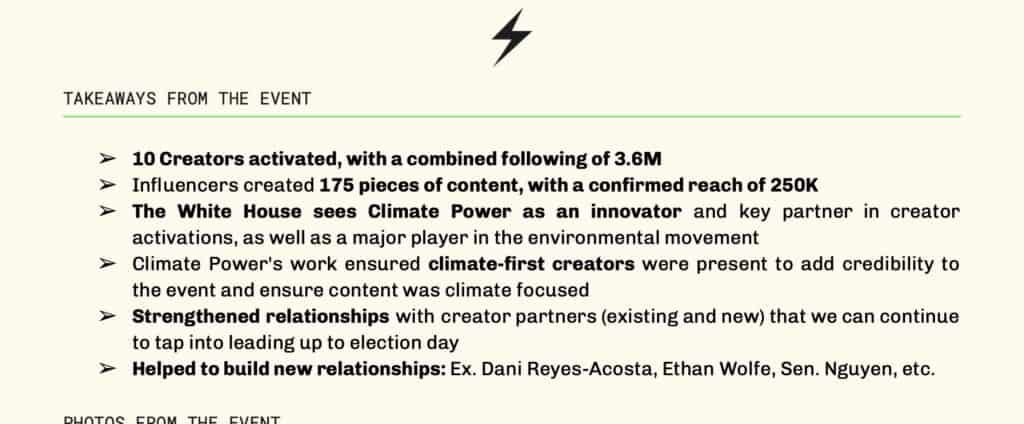
Climate Power’s Inflation Reduction Act campaign had an incredibly swift turnaround, as we had just over a week to drive as many calls to lawmakers as possible. We primarily focused on Instagram and TikTok influencers, as they have a faster turnaround time and we were thrilled to see how many creators wanted to use their platforms to promote climate action. The result was an impressive show of support for the Inflation Reduction Act, thousands of calls to lawmakers, a huge jump in new SMS subscribers, and a significant show of support in the digital space for a piece of legislation that may have otherwise gone under-the-radar in those communities. As a result of the work coming out of this campaign, the White House reached out to our team to help them organize a creator day around the celebration of the Inflation Reduction Act passage. Climate Power was 1 of only 2 external partners in the first-ever creator summit at the White House. Of the 20 creators in attendance, Climate Power secured half. Afterwards, we heard directly from the White House that senior leaders “loved” the event. Key Takeaways: – Combined reach of over 5 million views and 700k interactions (likes, comments, shares, and saves) across all content created by 30 influencers – A 96.5% increase in SMS subscribers with over 8,000 text-ins and a 65% call- through rate – Over 5,200 calls driven to lawmakers via this influencer content – The biggest drivers from this call to action were from the followers of Tefi Pessoa, Nadya Okamoto, Barrett Pall, and Tega Orhorhoro. – Multiple influencers made additional content outside of the contractual requirements – Time Magazine interviewed Climate Power and influencers working to promote the Inflation Reduction Act and voting for climate champions – Added dozens of new influencers to the Climate Power network across a variety of content genres – Gained attention from other organizations who reached out to learn more about our influencer strategy – The campaign got a shoutout during an influencer panel at Netroots Nation – Gained hundreds of new followers on Climate Power’s Instagram account
Best Video – Organizations
Health, Legal, and Adult Education Services – Make the Road NY
Make the Road NY’s video features our crucial health, legal, and adult education services and their impact on our members’ lives. Filiberta and Nancy are fierce examples of the dignity and justice that can be achieved through community organizing and survival services.
Best Video – Political Campaigns
Mike Collier for Texas Lt. Governor — Authentic
Our team worked closely with Mike Collier for Texas Lt. Governor to run a digital-first campaign in his rematch against entrenched incumbent Dan Patrick. We knew from the beginning that we would face a substantial fundraising gap, as the incumbent came into the race with $20M+, and that we would need to focus on maximizing the impact of our limited resources. One way we did this was by leveraging digital advertising to drive media coverage. We filmed and produced “Not A Good Republican” after the campaign identified public education as a wedge issue between local Republican officials and our opponent. This campaign, which had a relatively small budget, targeted Republicans in West Texas, a heavily Republican, rural part of the state that heavily opposed school vouchers, with a message about Dan Patrick’s failures on public education while highlighting Mike’s background as a businessman and former Republican. This Youtube ad was extremely successful as an advertising campaign with video completion and click through rates well above industry standards, but was also extremely successful in earning media coverage. This ad got extensive coverage in local news outlets, leading to an extended conversation about public education and vouchers. Shortly after, a number of Republican elected officials crossed parties to endorse Mike Collier, largely due to Dan Patrick’s stance on school vouchers. This ad fundamentally changed the trajectory of Mike Collier’s race. Until this point, the campaign had struggled to break through the news cycle as a long-shot Democratic candidate in Texas. With some creative thinking, our digital ads were able to drive the media narrative and ultimately lead to a series of unprecedented cross-party endorsements from a variety of Republican representatives that drove the narrative around Mike Collier for the remaining months of the campaign. In order to achieve this, we produced a contrast video that gave Republicans the permission structure to support Mike Collier. We knew that Mike was our best messenger, as he had a relatable demeanor, and had him speak direct-to-camera about his business experience and past as a Republican, while highlighting Dan Patrick’s failures on taxes and public education. We hyper targeted these ads in key West Texas counties where we knew local elected Republican officials (and voters) disagreed with Dan Patrick on school vouchers, and worked with the communications team to land stories about the campaign in all the major outlets. Shortly after this ad launched, a number of local Republicans announced their support for Mike Collier. Every major paper in the state covered those ads and endorsements, and the campaign gained weeks of media coverage valued at millions of dollars from this one ad. This surge in momentum also prompted a panic within Republican circles and was a major turning point in Mike’s campaign.
Best Website Design and Function
30th Anniversary — Innocence Project
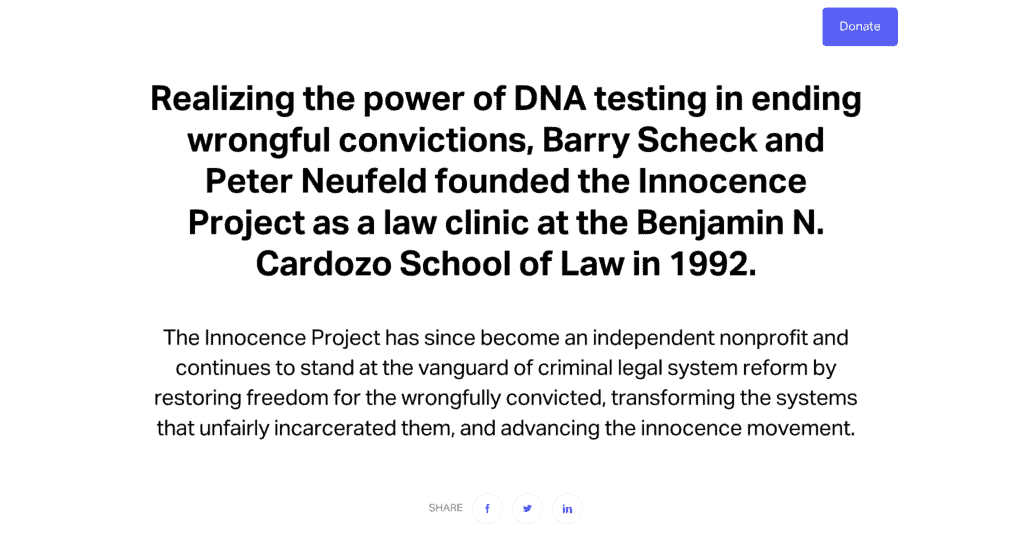


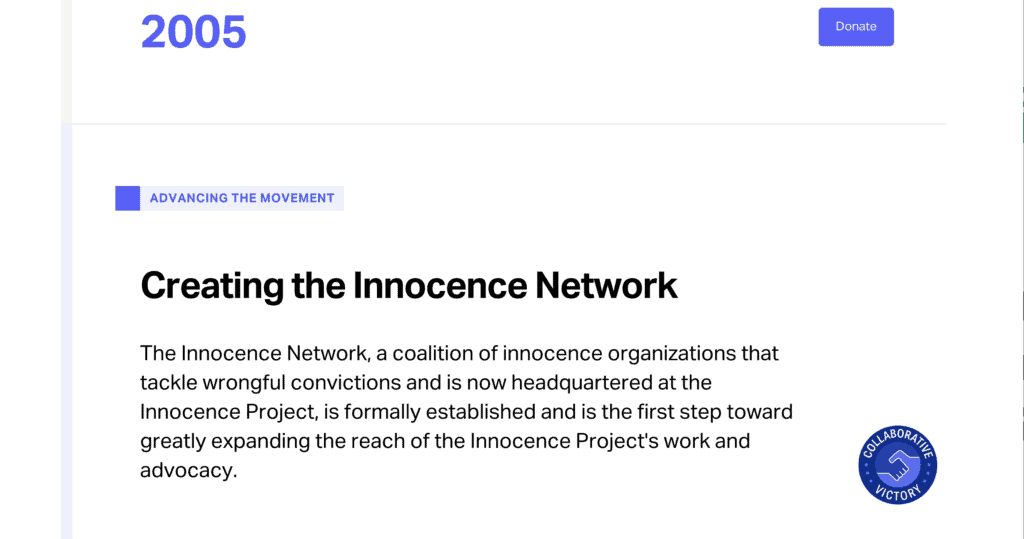
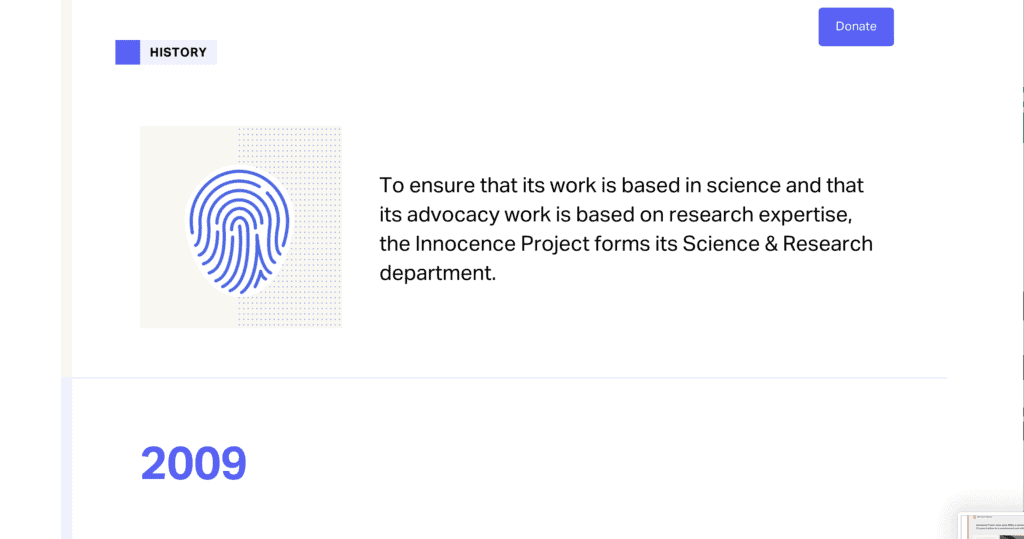
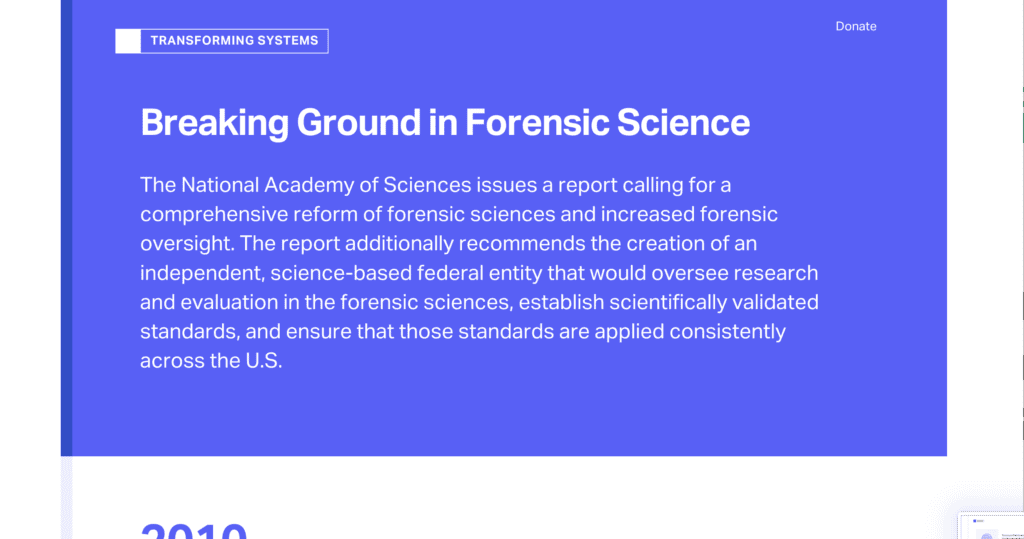
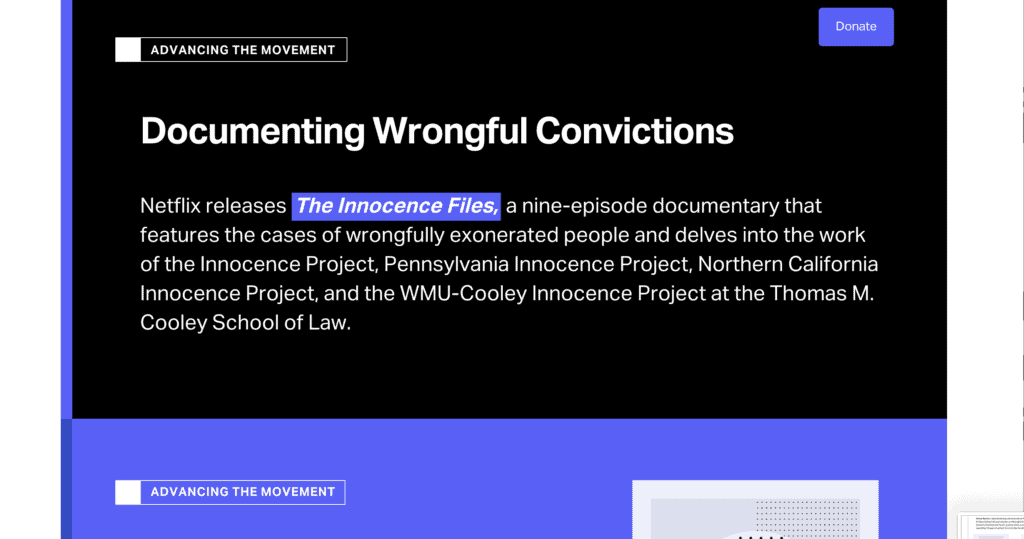
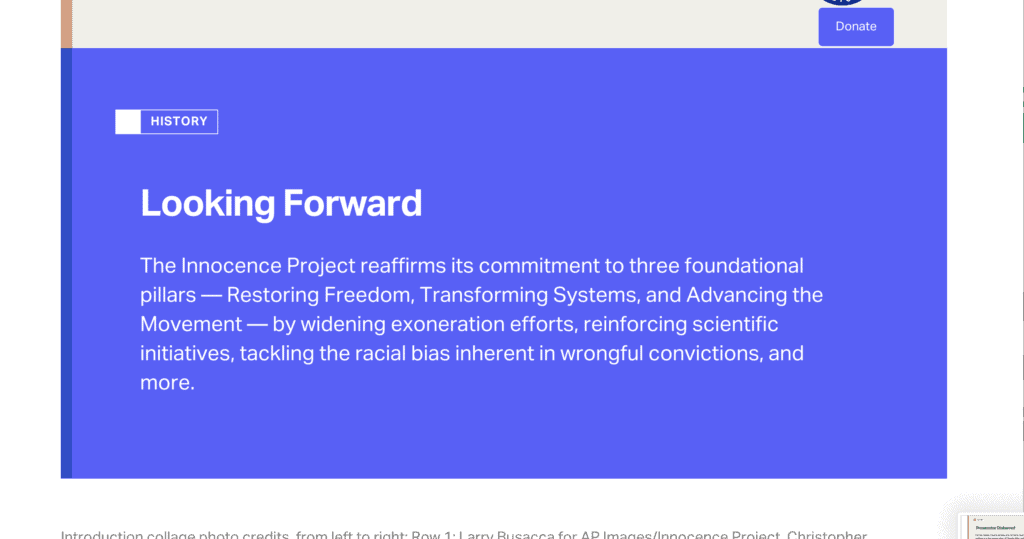
Last year, the Innocence Project (IP) celebrated its 30th anniversary by launching a comprehensive digital timeline that recognizes the nonprofit’s milestones; introduces new initiatives from the organization’s strategic plan; and educates supporters, donors, and the public on the importance of the IP’s work. The timeline is a detailed story of the last 30 years, covering everything that has transpired since the IP’s early days in the 1990s. The milestones — which include major exonerations, the passage of criminal justice reforms, and efforts to amplify the innocence movement — are presented in accordance with the three foundational pillars of the IP’s work: Restoring Freedom, Transforming Systems, and Advancing the Movement. Organized chronologically and beginning with the IP’s inception, the content is presented in a way that allows visitors to not only see the nonprofit’s growth over the years, but also to better understand the evolution of the organization’s mission and impact. The product of a collaboration between the IP, RALLY (an advocacy agency), and Ten7 (a technology studio), the project took eight months to complete. To provide an interactive user experience, the timeline features an opening animated collage of staff and exonerated/free people, archival photos, video, and graphics that help to vibrantly illustrate certain milestones. Though it mostly adheres to the IP’s brand identity (with the organization’s signature blue, copper, and light beige highlighted throughout), it also pushes the boundaries of that very identity by visually presenting information in an innovative but thoughtful manner. The selection of the background color for each milestone is intentional (for example, videos are set against a black background to simulate the darkness of a theater room) — while the illustrated graphics (such as the ones of the statehouse and of the DNA strand) incorporate the IP’s distinct dotted pattern. Since its publication last year, the timeline has served as an incredibly helpful resource to those eager to learn more about wrongful convictions and the innocence movement. Furthermore, it has been critical in generating support for the IP’s work and criminal justice reform. By presenting a full picture of the nonprofit’s accomplishments and transformation over the years, the timeline serves as a truthful record of both the IP’s history and the additional work that remains in the fight for an equitable and just criminal legal system.
Link to website/project: https://history.innocenceproject.org/
Most Impactful Digital Tool
VoteProChoice 2022 Voter Guide

The VoteProChoice 2022 Voter Guide educated voters and empowered them to vote for prochoice candidates all the way down the ballot in the 2022 midterm elections. In the wake of Roe being overturned, the Voter Guide helped to ensure that the massive numbers of newly registered and mobilized voters had the resources they needed to complete their ballot, voting in every race—from judges to state legislatures to school boards and city councils. After entering their address, users were shown a preview ballot with a recommendation or endorsement in every race with a prochoice candidate. The guide also aggregated the endorsements of 185 progressive partner organizations, featuring a total of 14,254 endorsements. 11.4 million guides were delivered directly to voters via emails, partnerships, a robust paid media program, and more. With the help of partners and influencers, VoteProChoice’s GOTV efforts reached 45.8 million users. Distribution of the tool focused on critical states, helping to flip the state legislature in Michigan, fueling critical wins in Pennsylvania, and contributing to key Congressional wins in Ohio. A carefully targeted paid program delivered traffic to the tool at an average of $0.43/click, and helped ensure that we reached younger voters, who were widely credited with helping deliver historic midterm results for Democrats. Over 200K users in key target states between 18 and 34 were delivered candidate slates showing all of the VoteProChoice candidates on their ballot in a screenshot-friendly format. There are 94K open seats on the ballot in 2023, and VoteProChoice has already begun building voter education plans and tools to ensure that we build on this momentum and continue to elect a new class of prochoice champions at every level, in every state.
